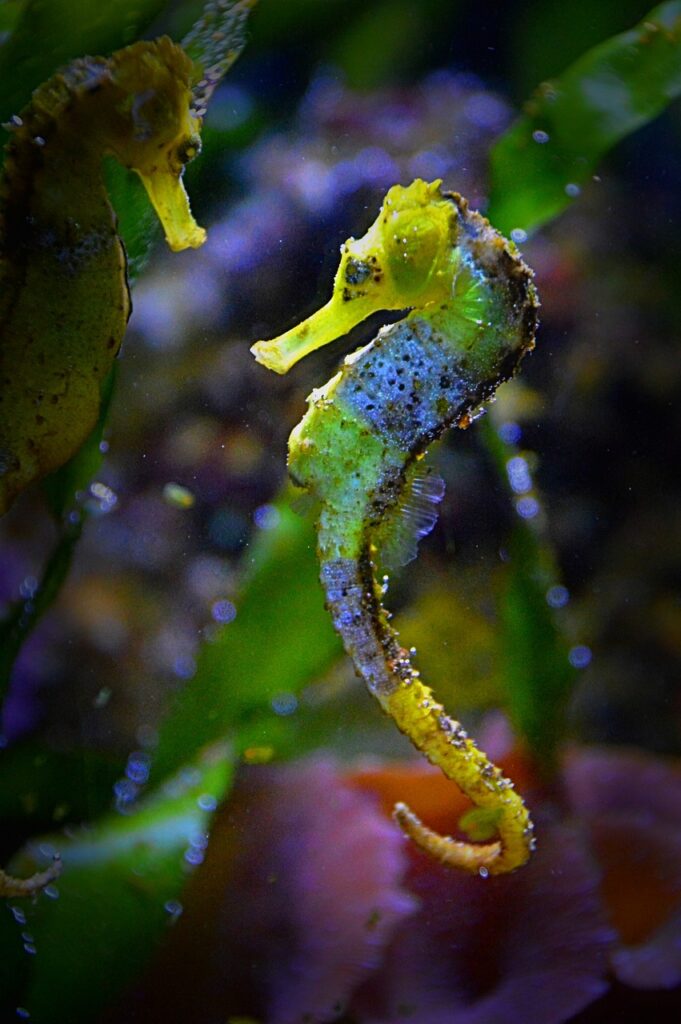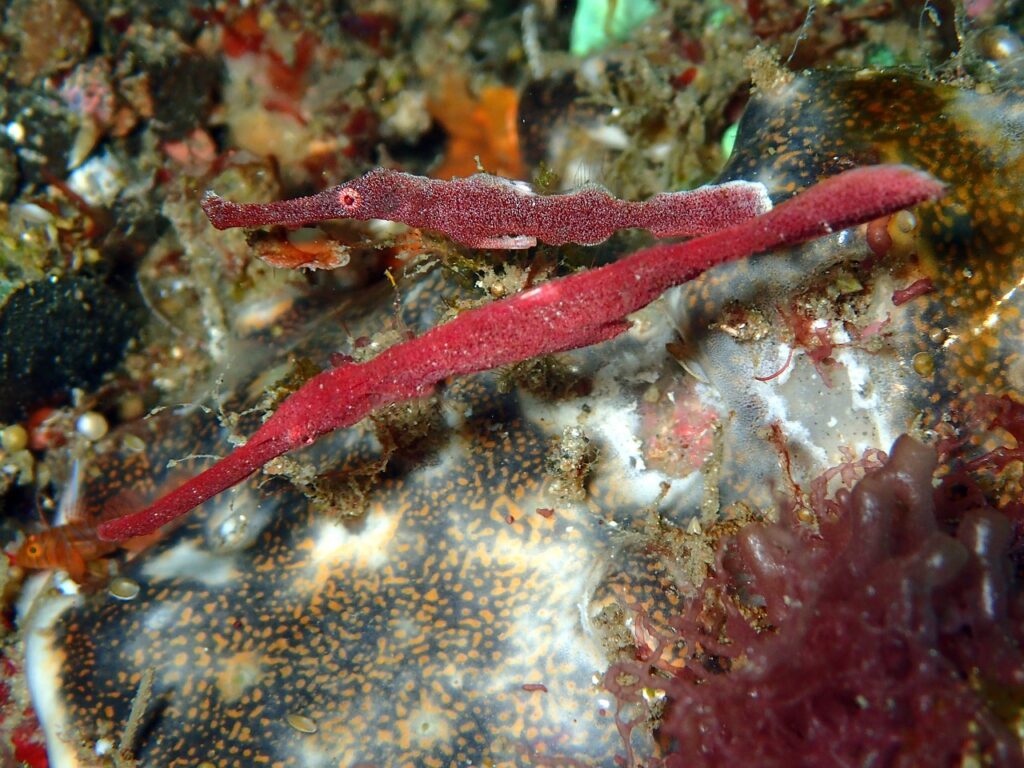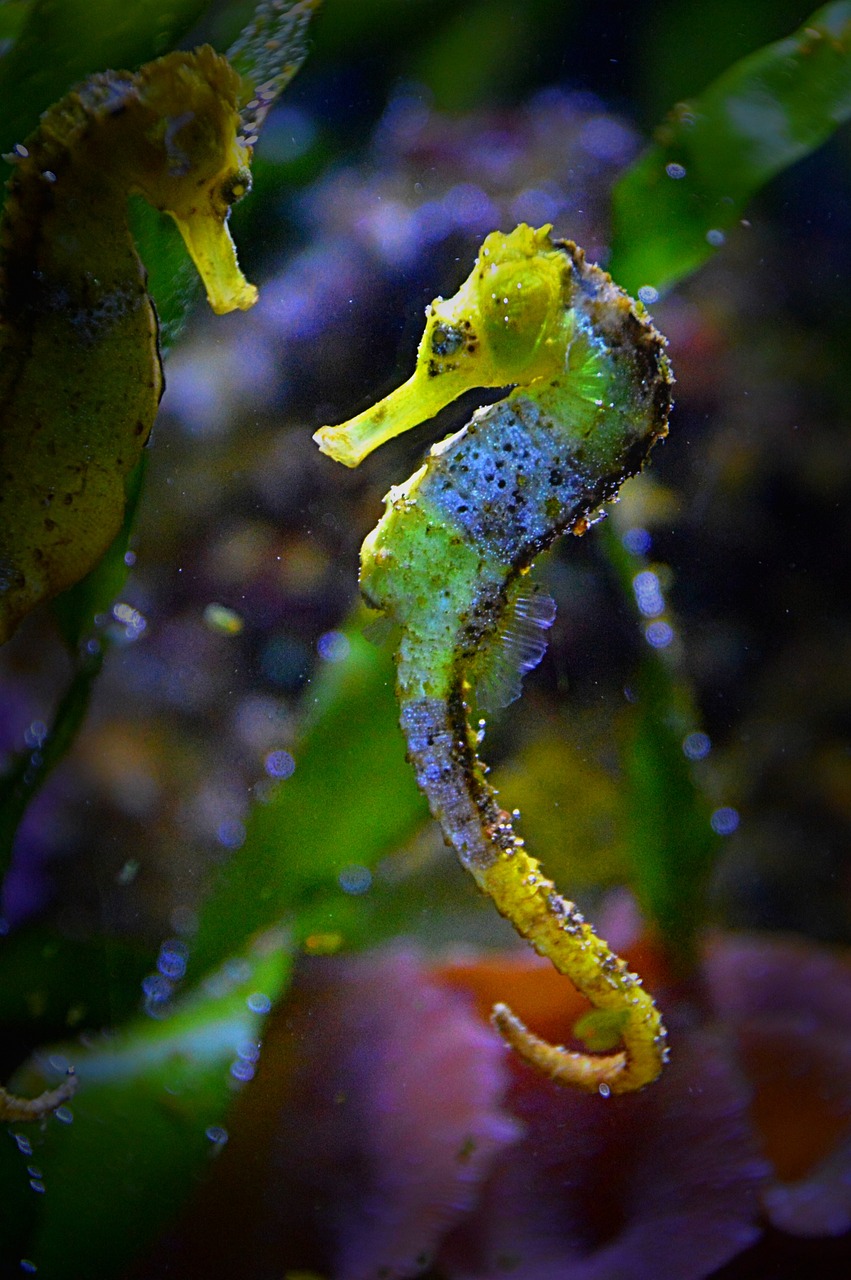Let’s talk about these fascinating underwater creatures: the Seahorses.

I’m sure you have seen this cute animal somewhere.
Sea horses are tiny freshwater fishes belonging to the genus Hippocampus. It is known for its characteristic shape which resembles the head of a horse hence the name.
What makes them interesting?
Graceful Ballet: The Seahorses elegant swim
All fishes swim horizontally. But, sea horses swim vertically/upright using their dorsal fin. They are hence slow swimmers with a top speed of over 1.5 meters per hour). So, they are mostly found resting with their tails clinging to support like corals or other plants. They sometimes even cling on to their mates so they don’t lose them (sounds cute isn’t it). Because they are slow swimmers, they are fragile. They are often swept away by strong currents.
There is yet another fish that swims vertically. Comment your answer below.
Precision predators: Their feeding style
They feed through a long structure called a snout which sucks up the food. The catch here is that they have a very simple digestive system with no stomach! They even lack teeth and their jaws are immovable. So they must constantly eat to survive. They mostly eat small crustaceans like shrimp and plankton or some even feed on larvae. The shape of their head gives them a hydrodynamic advantage and they can easily capture their prey for instance copepods. They feed in three stages: preparatory, expansive, and recovery.
Enigmatic visionaries: Their marvellous eye movement
Their eyes can move independently of each other like the chameleon giving them a comical appearance. This feature makes them a popular pet in home aquariums. However, they need to be kept separate from other fishes. They cannot survive if left to compete with other fishes.
Kindred spirits: The Seahorses and the Pipefishes

Since sea horses look like a highly modified version of the pipefish, it is believed that they diverged from the pipefish during the Oligocene era.
Armoured Elegance: their bony plates
A fish always has characteristic scales on its body but sea horses have their skin stretched out over bony plates arranged in the form of rings. These bony plates make it hard for other fishes to digest and hence there are not many natural predators.
Graceful curves: their characteristic neck
The neck is flexible and well-defined. It is characterized by a horn on its head known as the cornet which is species-specific.
Love and Loyalty Underwater: courtship rituals
To find a suitable partner, they first greet each other through a dance. They dance for minutes to hours before finally deciding on their partner. So, humans are not the only species to date! During courtship, the males can even change color or perform a predawn dance after which they do an actual courtship dance for about 8 hours. Monogamy (sticking to a single partner) is very rare in the aquatic world but common in sea horses. The males (D-shaped) can be distinguished from the females (P-shaped) due to the presence of a large brood pouch on their (male) abdomen. The female becomes plump when her eggs are ripening and when she is ready for courtship. They later become thin after mating.
Nature’s Marvel: male pregnancy in seahorses
While mating, the females lay up to 1500 eggs into a brood pouch on the males. She has only 6 seconds to do this. The sperms get activated due to the salt in the seawater after which the brood pouch closes. Hence fertilisation is physiologically external and physically internal. The male then takes rest and his female mate visits him every day until the end of his incubation. He carries the eggs for up to 45 days and after the incubation period releases the baby sea horses (also known as frys) into the water. Once they are in the water, they are on their own. They learn to survive the extreme environment on their own and escape predators. Hence, their survival rate is very low I.e. 5 out of 1000 babies reach adulthood. Surprisingly, the rate of survival of these baby sea horses is higher than most other fish as they receive protection from their father in the initial stages of development (right after fertilization). Most fishes do not receive this protection as the eggs are laid in an unprotected environment.
Traditional Tales: the Seahorses significance in traditional chinese medicine
Overfishing could be the main reason behind their extinction. According to traditional Chinese medicine, they consume sea horses for the treatment of several diseases like wheezing, and impotence, and are even used to induce labour.


Jellyfish swims vertically!
Kind of! They swim vertically only at night. However, razorfish, very similar tot he sea horse has permanently adapted to a head down tail up position (vertical swimming) to hide among the spines of sea urchin.
Why does a part of our brain and an entire genus have the same name – hippocampus? Any correlation?
Indeed yes. The hippocampus of the brain resembles the seahorse. An anatomist Julius Caesar Arantius published the description of hippocampus (of the brain) way back in 1587. He took inspiration from the sea horse belonging to the hippocampus family.
Thanks for sharing!